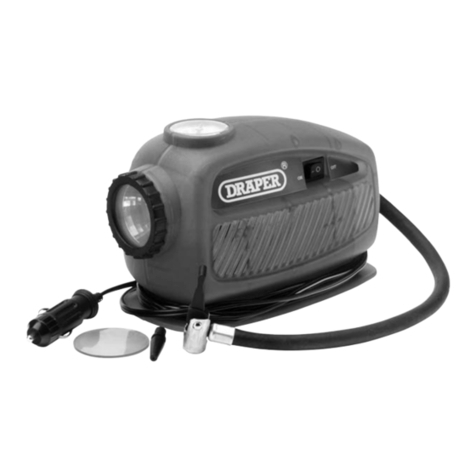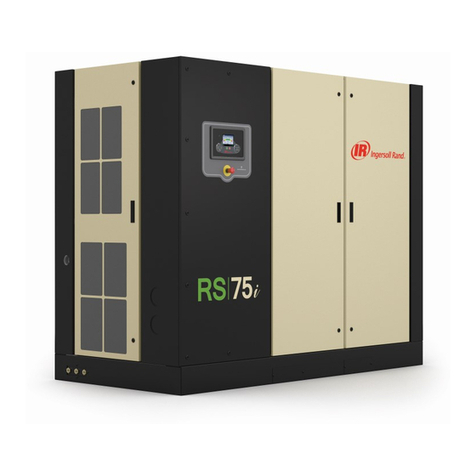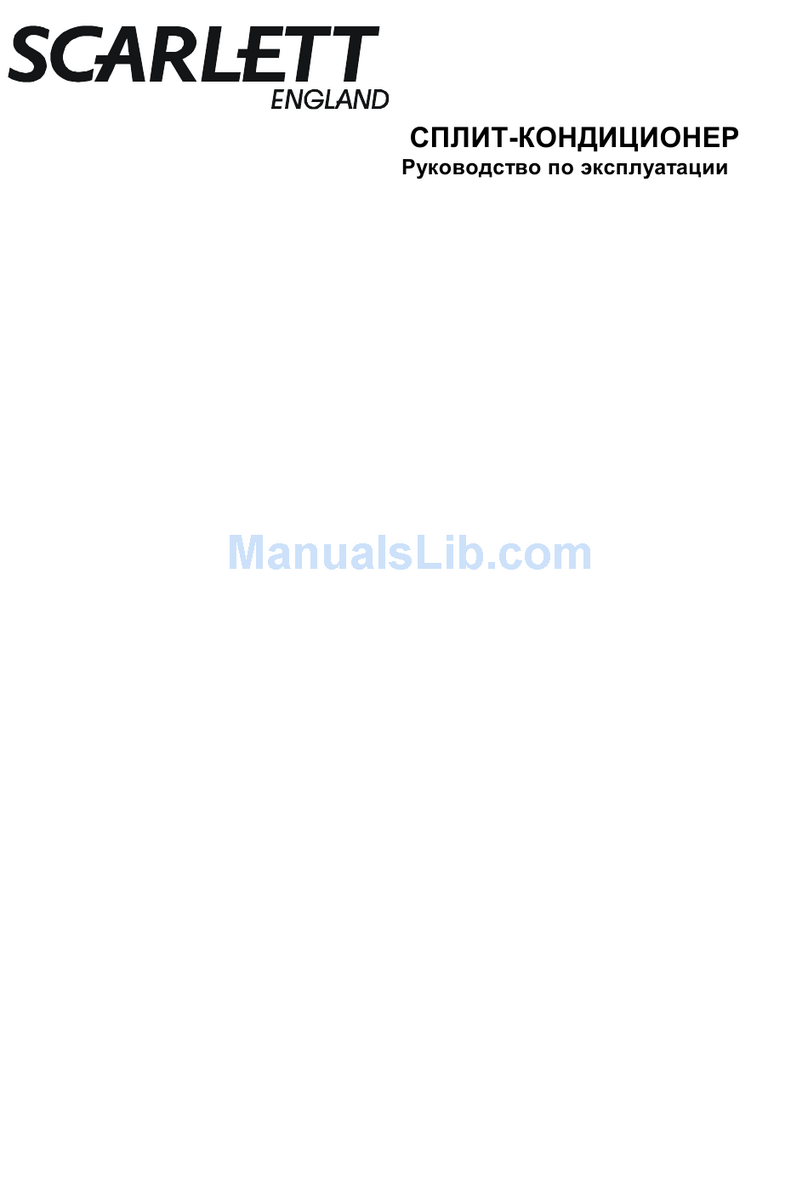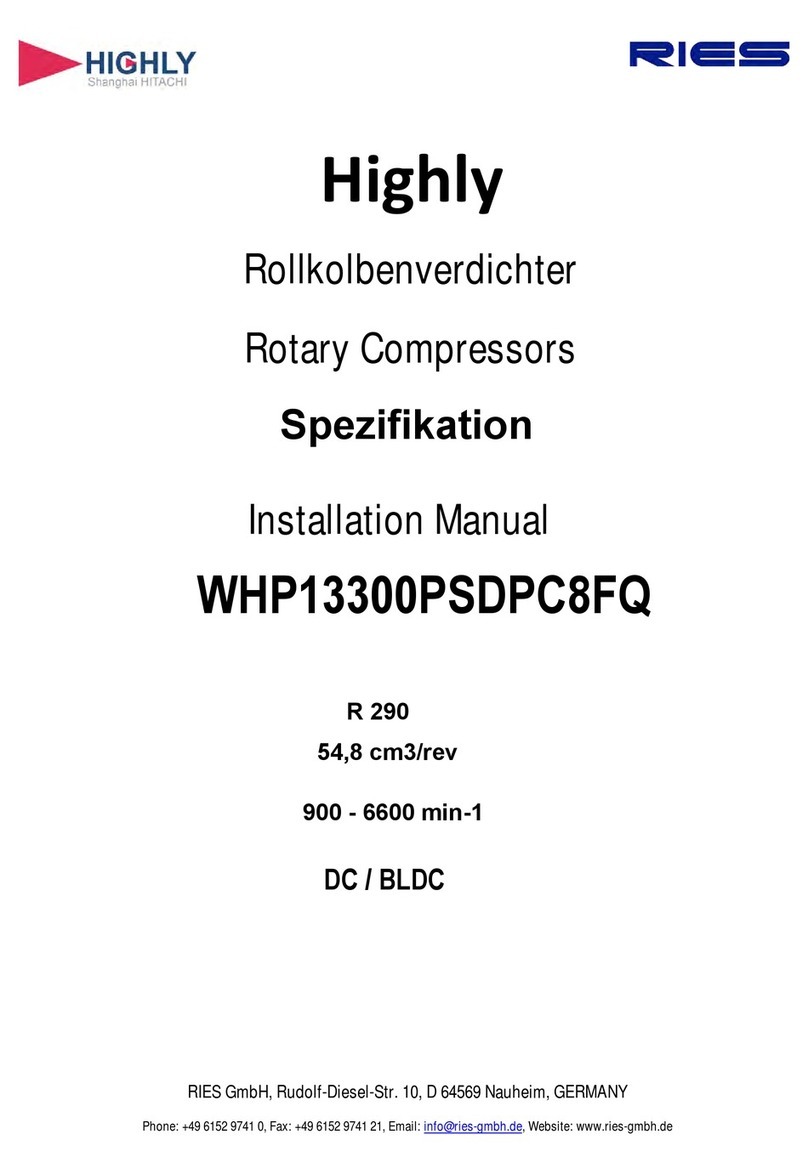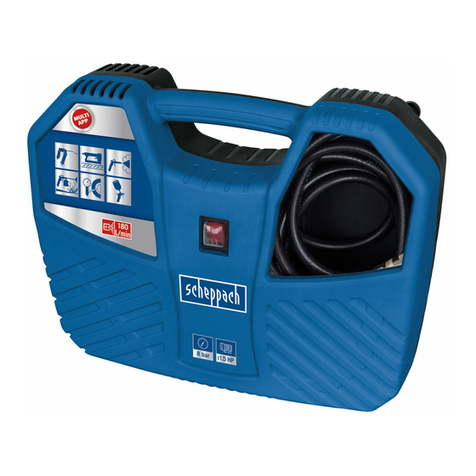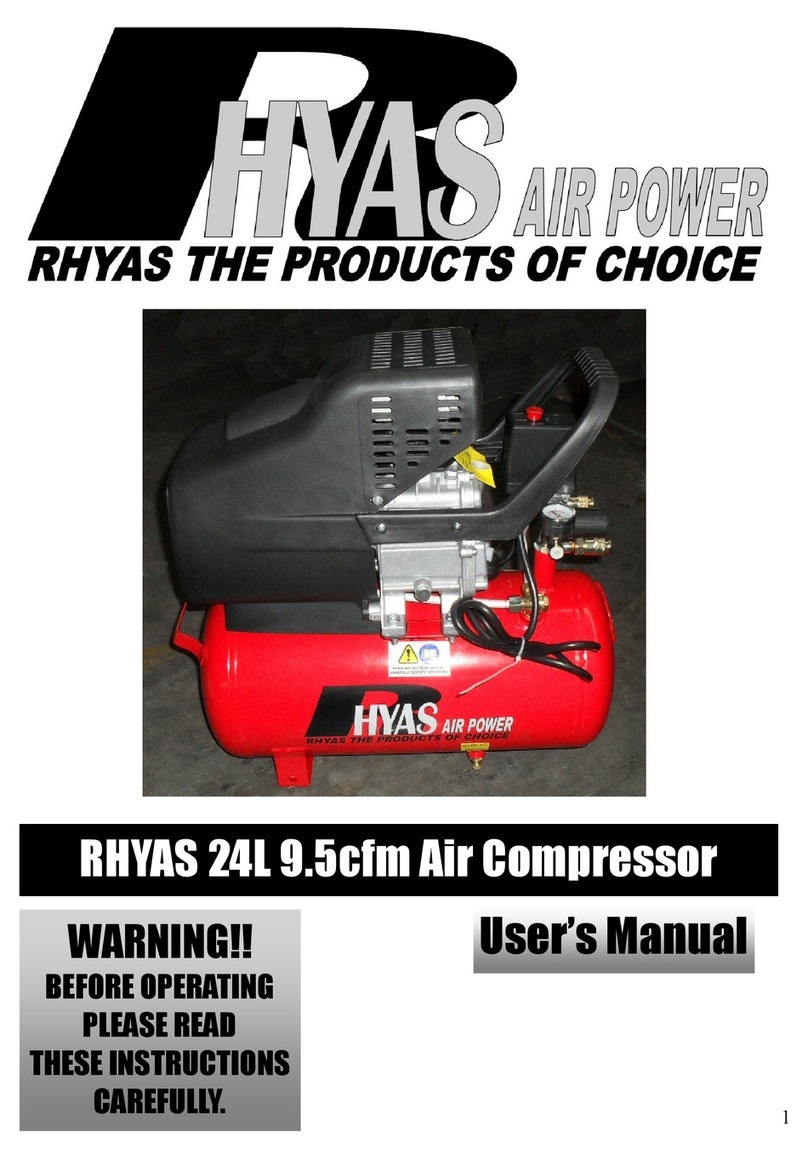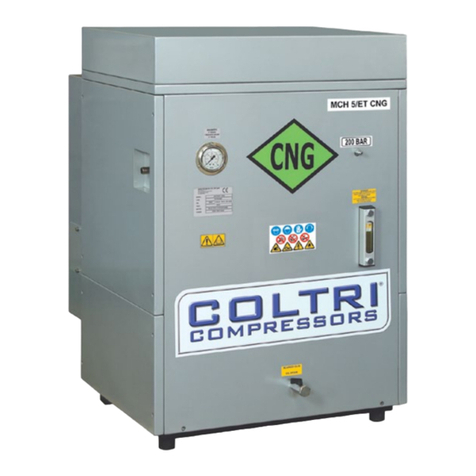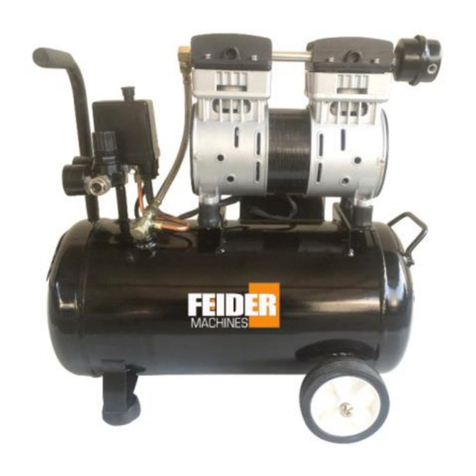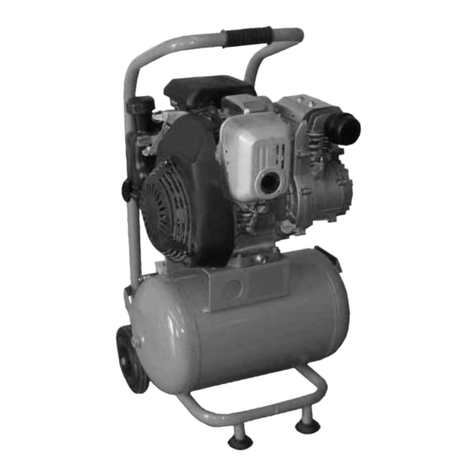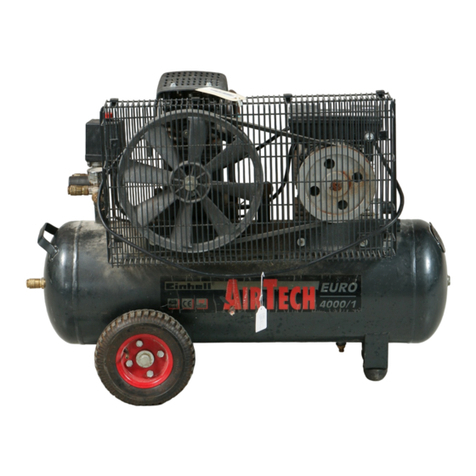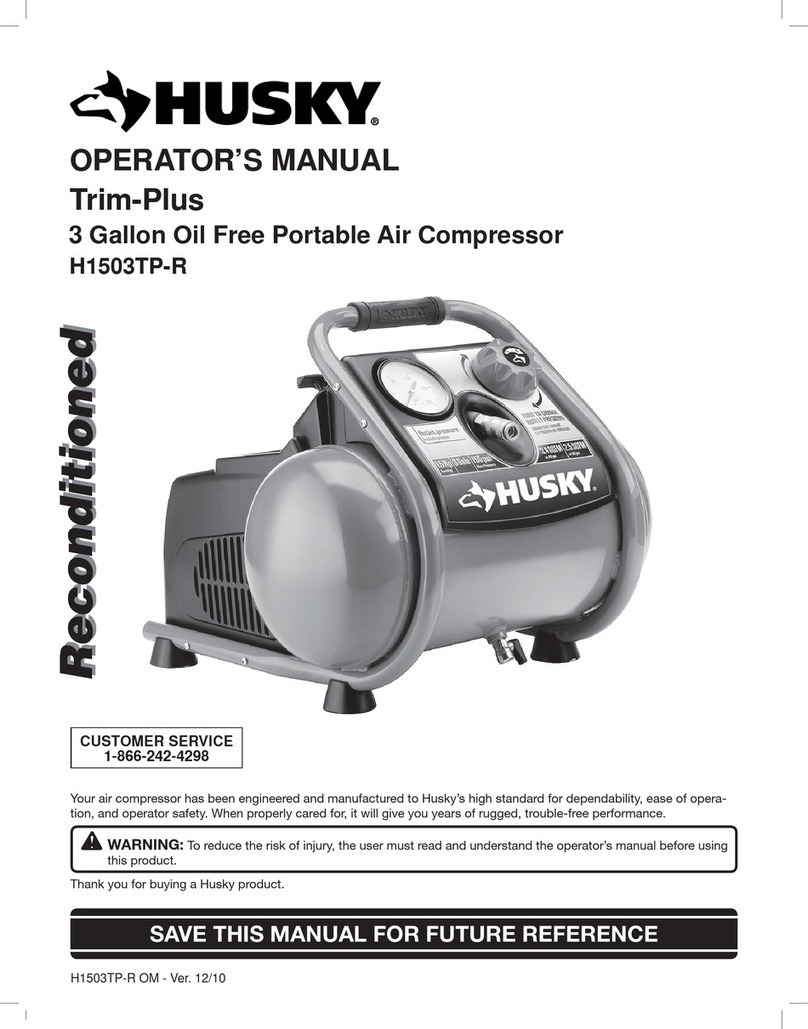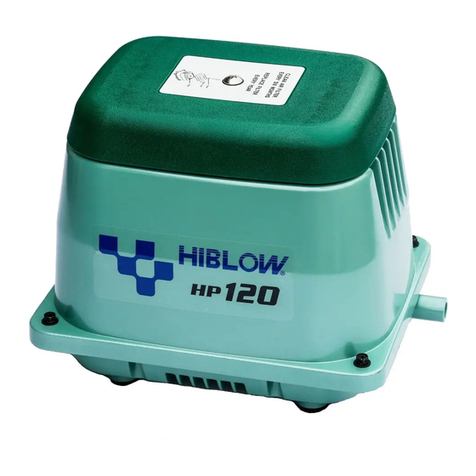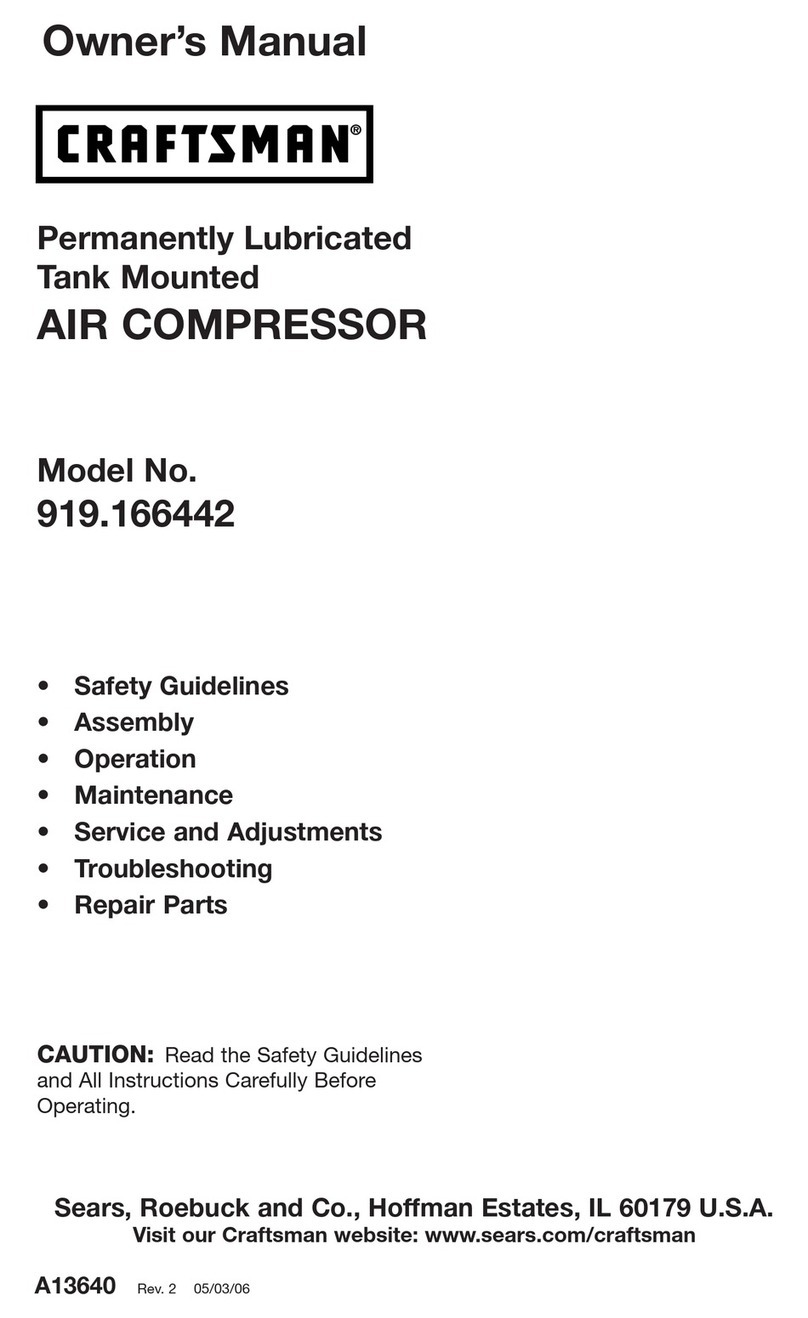
9. Do not damage the power cable. Never carry the compressor by its
cable and never pull on it to disconnect it from the power socket. Keep
the cable away from sources of heat, greasy areas, and sharp objects.
10. Never overestimate your strength. Always keep a firm position
and maintain your balance.
11. Always care for your compressor carefully. Keep your
compressor clean for better performance and more safety. Follow the
instructions for maintenance. Check the power cable regularly and, in
the event of a defect, have it replaced by a qualified service technician.
Check the extensions regularly and replace them if they are damaged.
Keep the handles dry, clean and free of grease or oil.
12. Unplug the tools. In case of non-use or maintenance of your
compressor.
13. Remove the tools on your compressor. Make a habit of checking
that the adjustment tensioners are removed before activating the tool.
14. Avoid untimely start-ups. Make sure the switch is in the OFF
position before plugging it into the mains.
15. Use only extension cords for outdoor use. Only use extension
cords designed for this purpose.
16. Always be on your guard. Watch your work. Use common sense.
Do not use the compressor if you are tired.
17. Check for faulty or damaged parts of your compressor. Before
using your compressor again, we strongly recommend that you carefully
check the protective accessories and other parts to see if the unit will
work properly. Check that the moving parts are properly secured, that no
parts are broken, that the unit is properly assembled and that no other
factor could affect its operation. Unless otherwise stated in the operating
instructions, any damaged protective gear or damaged parts must be
repaired by a qualified and approved company. Never use the
compressor if the switch does not activate or deactivate the tool.
18. Use original or equivalent replacement parts recommended by
the manufacturer or dealer. The use of accessories other than those
mentioned in the user manual may cause damage and constitute a
source of injury.
19. Always have the compressor serviced by an authorized
professional service center. This compressor complies with safety
standards. Repairs can only be carried out by qualified service, with
original spare parts. If this condition is not met, the user could be faced
with considerable danger.

















